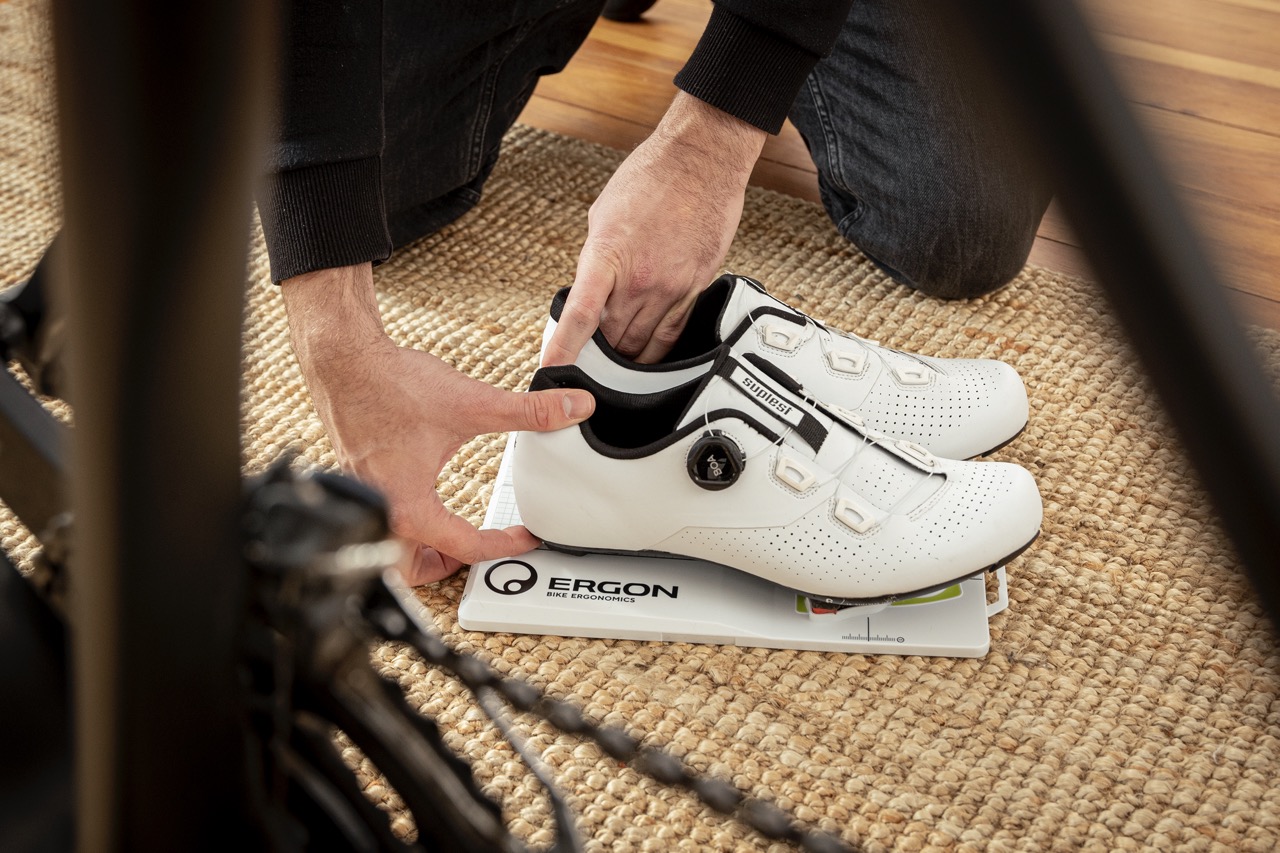The Correct Foot Position on the Bicycle

Foot pain while cycling is more common than you might think. The correct foot position is an essential factor for a noticeably better ride.
The Correct Foot Position on the Bicycle
One might think that the feet wouldn't be a problem while cycling – after all, we're sitting on the bike saddle, and our feet don't even touch the ground. Unfortunately, that's not the case. The correct foot position ensures the best possible power transfer from your feet to the pedals and the road. And an incorrect foot position can lead to a range of complaints. In this article, we explain where these complaints come from, how you can correct your foot position, which tools can help you, and how you can pedal noticeably better.

The Correct Foot Position on Pedals
Let's start with the foot itself. It should ideally be in a neutral alignment to the direction of travel on the pedal, meaning the heel should not be turned inward or outward. Of course, foot position depends heavily on individual anatomy and biomechanics. For many, the neutral foot position works quite well as a starting point. Those comfortable with slightly turned-in or turned-out feet should maintain this position. However, always ensure a straight leg axis from the front and a tension-free feeling in the knee. Torsional stresses from the lower to the upper leg lead to the explained complaints.
Cyclists should also pay attention to the correct position of the pedal under the ball of the foot. This ensures stable and even power transfer. The ergonomic Ergon PT pedals allow intuitive placement with the best grip, automatically aligning your leg axis correctly and maintaining it during the ride. This protects your knees and feet, allowing you to pedal on long rides without incorrectly loading your knee joints, which can lead to fatigue or pain. But often, your problems are not yet solved.
The Surface Area Makes the Difference
Many riders are plagued by numbness during longer rides. This restricts freedom of movement and can lead to unpleasant tingling in the sole of the foot, toes, and heel during and after the ride. The correct pedal can also help here, as a too-small surface area leads to pressure points on the midfoot and ball of the foot. Therefore, you should install ergonomic pedals that, adapted to your foot size, distribute the pressure across your entire sole and arch. The calculation is simple: more surface area means less pressure, and less pressure means better blood circulation in the foot. Here's another important point: To ensure the best blood circulation, make sure your shoes are not too tightly laced, which sporty riders, especially, often do wrong. Ergonomic insoles can also help make your ride more comfortable. Ergon insoles are specially designed for touring riders and road or mountain bikers. With Ergon IP Solestar insoles, you ensure even pressure distribution, especially in combination with ergonomic pedals. They stabilize the foot arch, support the ankle joint, and optimize your leg axis.

Pain-Free Even with Clipless Pedals
Correct adjustment is significant if you use pedal cleats, as the contact area is already relatively small due to the design. Even if you wear an IP Pro Solestar in your shoe, slight deviations from the ideal foot angle or a difference between the left and right cleat can lead to an asymmetrical pedaling motion and imbalances. These then lead to complaints in the knee or foot.
To adjust your cleats ergonomically correctly, Ergon has developed the TP1 Cleat Tool. With this easy-to-use tool, you can optimally configure your clipless pedals’ Q-factor, foot position, and heel rotation. All settings can be quickly and accurately transferred from one shoe to another.

The Overall System Must Be Right
Saddle, handlebars, and pedals form the important ergonomic triangle of a bicycle, in which foot position plays an essential but not isolated role. Correct leg positioning is influenced by saddle position and foot position. If your ride is to be smooth and pain-free, you need to relieve your kneecap, joints, hips, and upper body as much as your feet. You need to adjust saddle position and height, handlebar, stem, cockpit configuration, and the relation of all contact points to each other. And of course, you also need specially designed saddles and grips for the many different riding styles.
Sounds complicated? It doesn't have to be. If you have your bike fitted by a professional, your bike will be adjusted to you with millimeter precision by the bike fitter. If you don't want to spend several hundred euros on this, use the Ergon Fitting Box. With it, you can carry out the ergonomically correct individualization of your bike in seven steps yourself. In the process, you will also encounter terms such as crank length, foot position, and leg axis again. The fitting boxes are available for different types of bicycles, such as Touring, MTB, and Road bikes.
Don't let your bike tour become a battle for every centimeter. You now know everything you need to know about "correct foot position on the bicycle" so that you can pedal effectively, pain-free, and at maximum speed. This makes cycling fun again.